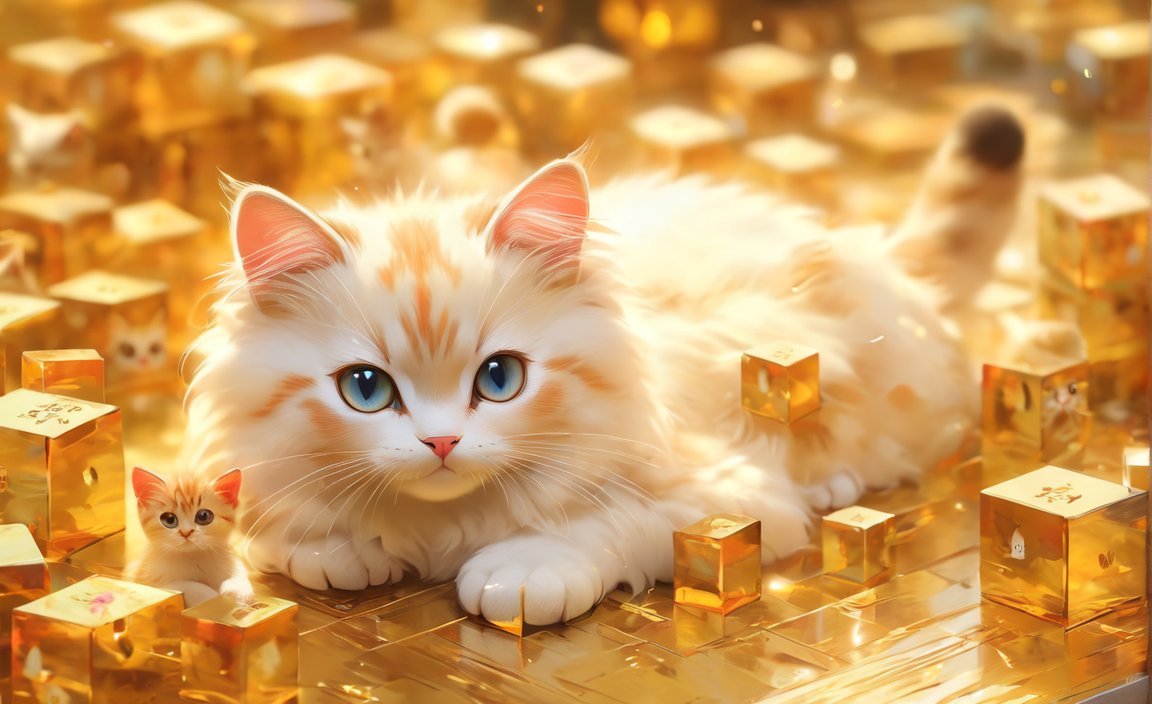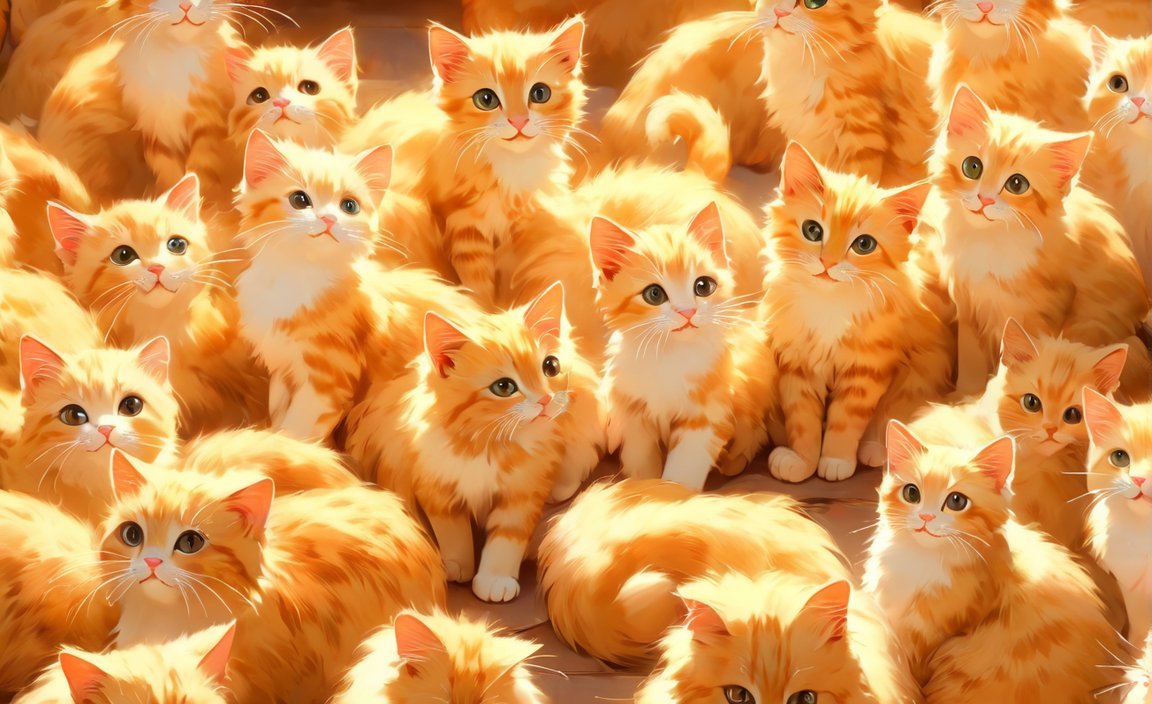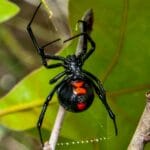Cats, with their enigmatic personalities and captivating charm, have long held a special place in human hearts and homes. Their independent nature, coupled with their moments of undeniable affection, make them truly unique companions. Let’s delve into the fascinating world of cats and uncover ten incredible facts that showcase their remarkable abilities and endearing quirks.
1. Athletic Acrobats: Cats’ Leap of Faith

Cats are renowned for their agility and impressive jumping abilities. Their powerful hind legs, equipped with over 30 muscles, allow them to leap up to six times their height, enabling them to scale towering heights with ease. This remarkable skill is not just for show; it’s an essential tool for hunting and evading predators.
Vertical Leap Champions
With their incredible jumping prowess, cats can easily reach high shelves, countertops, and even tree branches. This ability to navigate vertically provides them with several advantages:
- Hunting Prowess: Cats are obligate carnivores, meaning they require meat for their survival. Their leaping ability allows them to pounce on unsuspecting prey, both in the wild and in your living room.
- Evasion Tactics: In the wild, cats face various predators, from foxes and coyotes to hawks and eagles. Their ability to jump to high places helps them escape danger and stay safe.
- Exploring Their Domain: Cats are naturally curious creatures, and their leaping ability allows them to explore their surroundings from different vantage points. They can survey their territory, check out potential hiding spots, and even keep an eye on their humans from above.
Beyond Jumping: Vertical Mobility in Action
Cats’ impressive jumping skills extend beyond mere vertical leaps. They can also perform acrobatic maneuvers like long jumps, wall jumps, and even backflips. Their flexible spines, powerful muscles, and keen sense of balance make these feats possible.
A Legacy of Leaping
Cats’ jumping abilities have been celebrated throughout history. In ancient Egypt, cats were revered as gods, and their leaping prowess was seen as a symbol of agility and power. Today, cats continue to amaze us with their vertical acrobatics, reminding us of their wild ancestry and their enduring connection to the natural world.
2. Ears to the World: Cats’ Superhearing
Cats possess exceptional hearing, capable of detecting sounds that are beyond the human range. Their ears can rotate 180 degrees, allowing them to pinpoint the source of the slightest sound. This acute auditory sense is crucial for hunting and staying alert in their environment.
Beyond Human Earshot
Cats can hear sounds at frequencies up to 65 kHz, while humans can only hear up to 20 kHz. This means that cats can detect high-pitched sounds that are completely inaudible to us. This ability to hear a wider range of sounds provides cats with several advantages:
- Hunting Prowess: Cats are natural predators, and their superhearing allows them to detect the faintest sounds of their prey, even in the dark or undergrowth. They can hear the rustling of leaves, the scurrying of rodents, and even the chirping of birds from a distance.
- Situational Awareness: Cats rely on their hearing to stay alert to their surroundings. They can hear the approach of potential threats, like other animals or humans, giving them time to react and protect themselves.
- Communication with Fellow Felines: Cats use a variety of vocalizations, including meows, hisses, and purrs, to communicate with each other. Their acute hearing allows them to pick up these sounds from a distance, facilitating communication and interaction.
Ear Anatomy: The Secret to Superhearing
Cats’ exceptional hearing is due to several anatomical features:
- Large Ears: Cats have relatively large ears compared to their head size, which increases the surface area available to collect sound waves.
- Earpinnae: The earpinnae, or the outer part of the ear, are shaped to funnel sound waves into the ear canal, further enhancing sound reception.
- Middle Ear Bones: The middle ear bones in cats are small and lightweight, allowing them to vibrate more efficiently in response to sound waves.
- Sensitive Auditory Nerves: Cats have a large number of auditory nerves, which transmit sound information from the ear to the brain.
Pinpointing Sound Sources with Precision
Cats’ ability to rotate their ears 180 degrees is a remarkable adaptation that allows them to pinpoint the source of sound with incredible precision. By comparing the intensity of sound waves reaching each ear, cats can determine the direction of the sound source. This ability is crucial for hunting, as it allows cats to locate their prey even when they are out of sight.
In conclusion, cats’ superhearing is a powerful tool that has been honed over centuries of evolution. It allows them to excel as predators, navigate their environment with confidence, and communicate effectively with their fellow felines. As we marvel at their ability to hear the whispers of the world around them, we gain a deeper appreciation for the remarkable adaptations that make cats such fascinating and successful creatures.
3. Masters of Rest: Cats’ Sleeping Spree
Cats are renowned for their love of sleep, often spending up to 18 hours a day snoozing. This extensive slumber may seem like laziness, but it’s an essential part of their feline biology. Cats are crepuscular animals, meaning they are most active at dawn and dusk. To prepare for these bursts of activity, they conserve energy by sleeping for extended periods.
Energy Conservation Experts
Cats’ bodies are highly efficient at energy conservation, allowing them to sleep for such long periods without depleting their resources. They have a slow metabolism, which means they burn calories at a lower rate than other mammals. Additionally, their muscles are designed to relax quickly and efficiently, reducing energy expenditure during sleep.
The Benefits of Deep Slumber
Beyond conserving energy, cats’ deep slumber provides several other benefits:
- Brainpower Boost: Sleep is essential for brain function, allowing the brain to process information, consolidate memories, and maintain cognitive sharpness. Cats’ extensive sleep helps them stay mentally alert and agile.
- Physical Recovery: During sleep, cats’ bodies repair tissues, build muscle, and strengthen their immune systems. This restorative sleep helps them maintain their physical health and well-being.
- Stress Reduction: Sleep is a natural stress reliever, allowing cats to relax and de-stress. This restful sleep contributes to their overall well-being and emotional balance.
Sleep Styles: From Snuggles to Solo Slumbers
Cats exhibit a variety of sleep styles, each tailored to their individual preferences and environment. Some cats prefer to curl up in cozy spots, while others opt for open spaces or elevated surfaces. They may sleep alone or snuggle with their humans or fellow felines.
A Sleep Cycle Designed for Efficiency
Cats’ sleep cycle consists of two main stages: non-rapid eye movement (NREM) sleep and rapid eye movement (REM) sleep. NREM sleep, which accounts for the majority of their slumber, is characterized by relaxed muscles and slow brain waves. REM sleep, associated with dreaming, is characterized by rapid eye movements and heightened brain activity. Cats cycle between these sleep stages throughout their resting periods.
Respecting the Feline Slumber
While cats may seem like lazy sleepers, their extensive slumber is an essential part of their biology. Understanding the benefits of their sleep and respecting their need for rest is crucial for their well-being. As we appreciate their love of naps and cozy snoozing spots, we gain a deeper appreciation for their unique sleep habits and the vital role sleep plays in their feline lives.
4. Whisker Wisdom: Cats’ Tactile Sensors
Cats’ whiskers, those delicate strands that adorn their faces, are not just for show; they are sophisticated tactile sensors that play a crucial role in their lives. These highly sensitive whiskers act as extensions of their touch, providing them with valuable information about their surroundings and helping them navigate the world with confidence and precision.
Whisker Anatomy: A Sensory Masterpiece
Each whisker is embedded in a specialized follicle, equipped with nerves that connect directly to the cat’s brain. These follicles are densely packed with sensory receptors, making the whiskers incredibly sensitive to touch and even the slightest changes in air currents.
Navigating in the Dark
Cats’ whiskers are particularly useful in low-light conditions, where their vision may be limited. As they move, their whiskers brush against objects, providing them with a detailed map of their surroundings. This tactile information allows them to avoid obstacles, find their way home, and even locate food and water sources in the dark.
Detecting Airflow Changes
Whiskers are also sensitive to changes in air currents. As cats move or as air currents fluctuate, their whiskers detect these subtle shifts, helping them anticipate potential dangers or prey movements. This ability is particularly important for hunting, as it allows cats to pinpoint the location of their prey even when it is out of sight.
Communication and Emotional Expression
Whiskers also play a role in communication and emotional expression. The position and movement of a cat’s whiskers can convey a range of emotions, from contentment to alertness to anxiety. For instance, flattened whiskers against the face often indicate relaxation, while erect whiskers can signal excitement or curiosity.
Whisker Etiquette: Respecting Feline Sensitivity
Cats’ whiskers are highly sensitive and essential for their sensory perception. It is important to handle their whiskers with care, avoiding pulling or tugging on them. Respecting their whiskers is a way of showing respect for their unique sensory system and the vital role it plays in their lives.
In conclusion, cats’ whiskers are not mere adornments; they are sophisticated sensory tools that provide them with a wealth of information about their environment. From navigating in the dark to detecting prey movements to communicating their emotions, whiskers are an integral part of a cat’s sensory experience. Understanding the importance of whiskers and respecting their sensitivity is a testament to our appreciation for these remarkable feline companions and the fascinating adaptations that make them such intriguing creatures.
5. Verbal Virtuosos: Cats’ Vocal Symphony
Cats, often perceived as enigmatic creatures, possess a rich and varied vocal repertoire that goes beyond the familiar meow. While they may not be as vocally exuberant as their canine counterparts, cats communicate a wide range of emotions, intentions, and needs through their vocalizations. From the soothing purr to the menacing hiss, each sound serves as a distinct thread in the tapestry of feline communication.
Meows: The Language of Cats
The meow, perhaps the most recognizable feline vocalization, is a versatile tool used for a variety of purposes:
- Greeting: Cats greet familiar individuals, including humans and other cats, with a series of meows, often accompanied by headbutts and rubbing.
- Attention-seeking: When seeking attention, cats may meow persistently, often with a higher pitch and increased urgency.
- Requesting food: Cats often meow to indicate hunger or to request food from their human companions.
- Expressing discomfort or distress: Cats may meow in a low, plaintive tone to express discomfort or distress, such as when feeling unwell or lost.
Purrs: The Sound of Contentment
The soothing purr is a ubiquitous sound in the feline world, often associated with contentment and relaxation. However, purrs also serve other purposes:
- Healing and Pain Relief: Purring vibrations have been shown to promote bone growth and healing, reduce muscle tension, and even aid in wound healing. Additionally, purring may release endorphins, the body’s natural pain relievers.
- Communication with Kittens: Mother cats purr to communicate with their kittens, reassuring them and providing comfort.
- Bonding with Humans: Cats may purr when interacting with their human companions, strengthening the bond between them.
Hisses, Growls, and Chirps: A Range of Expressions
Beyond meows and purrs, cats employ a variety of other vocalizations to convey their emotions and intentions:
- Hisses: Hissing is a defensive sound used to warn off potential threats or express fear or anxiety.
- Growls: Growls are deeper, more menacing sounds used to deter rivals, protect territory, or express aggression.
- Chirps: Chirps are high-pitched sounds often used to greet humans or other cats, expressing affection or excitement.
Cats as Vocal Virtuosos
Cats’ vocalizations are not just random sounds; they are carefully crafted utterances that convey a wide range of meanings. By understanding the nuances of feline vocalizations, we can better understand our feline companions and deepen our connection with them.
In conclusion, cats are not silent creatures; they are vocal virtuosos who use their voices to communicate a rich tapestry of emotions, intentions, and needs. From the soothing purr to the warning hiss, each sound serves as a window into the feline world, revealing the complex and fascinating lives of these intriguing creatures.
6. Tongue Twisters: Cats’ Rough Raspers

Cats’ tongues may not be the most aesthetically pleasing, but they are remarkably well-adapted for a variety of tasks. Covered in tiny, backward-facing barbs called papillae, these rough tongues serve as essential tools for grooming, feeding, and even climbing. While they may not feel like the softest feline feature, these raspers play a vital role in a cat’s life.
Grooming Gurus: The Papillae in Action
The papillae on cats’ tongues act like tiny brushes, helping them remove dirt, debris, and loose hair from their coats. This meticulous grooming not only maintains their appearance but also helps distribute natural oils, keeping their coats healthy and shiny. Additionally, the papillae aid in removing parasites like fleas and ticks, promoting overall feline health.
Meat-Stripping Masters: Efficient Meat Extraction
Cats are obligate carnivores, meaning they require meat for survival. Their rough tongues are perfectly adapted for extracting meat from bones. The papillae act like tiny hooks, catching and scraping meat off bones, ensuring that cats maximize their nutritional intake. This adaptation is crucial for cats in the wild, allowing them to efficiently extract every morsel of sustenance from their prey.
Climbing Champions: Navigating Rough Terrain
Cats’ rough tongues also play a role in climbing. The papillae provide traction on rough surfaces, allowing cats to scale trees, walls, and other obstacles. This adaptation is particularly valuable for wild cats, enabling them to navigate their natural environments with agility and precision.
A Rough Yet Essential Feature
While cats’ rough tongues may not be the most pleasant to pet, they are essential tools for their survival and well-being. From grooming and feeding to climbing and exploring, these raspers play a vital role in a cat’s life. Understanding the unique adaptations of cats’ tongues is a testament to the remarkable versatility and resilience of these fascinating creatures.
In conclusion, cats’ tongues are not just rough; they are remarkably well-adapted for a variety of tasks. The papillae, those tiny, backward-facing barbs, serve as essential tools for grooming, feeding, and climbing. While they may not feel like the softest feline feature, these raspers play a vital role in a cat’s life, allowing them to thrive in their environment and showcase their remarkable adaptability and resilience.
7. Longevity Legends: Cats’ Extended Lifespan
Cats have long been admired for their elegance, grace, and independent nature. But did you know that cats also possess an impressive longevity, with some individuals living well into their teens? While the oldest recorded cat, Crème Puff, reached an astonishing 38 years and 3 days, the average lifespan for domesticated cats is around 12 to 15 years. This remarkable longevity can be attributed to a combination of factors, including genetics, nutrition, and overall care.
Genetic Predisposition: A Blueprint for Longevity
Cats inherit a genetic blueprint that plays a significant role in their lifespan. Studies have shown that certain genes, such as those associated with DNA repair and cellular aging, can influence how long a cat lives. These genes, passed down from parents to offspring, can provide a foundation for a long and healthy life.
Nutrition: Fueling the Feline Body
A cat’s diet plays a crucial role in its overall health and longevity. Providing a balanced and nutritious diet tailored to a cat’s age, activity level, and individual needs is essential for supporting their well-being. Adequate intake of proteins, carbohydrates, fats, vitamins, and minerals helps maintain a strong immune system, promote healthy organ function, and reduce the risk of chronic diseases that can shorten lifespan.
Preventive Care: A Proactive Approach to Wellness
Regular veterinary checkups and preventive care are essential for maintaining a cat’s health and extending its lifespan. These visits allow veterinarians to monitor a cat’s overall health, identify potential issues early on, and provide timely interventions. Vaccinations, parasite control, and dental care are all crucial aspects of preventive care that can help cats live longer, healthier lives.
Environmental Factors: Creating a Supportive Living Space
A cat’s environment also plays a role in its longevity. Providing a safe, comfortable, and stimulating living space can help reduce stress, encourage physical activity, and promote overall well-being. Access to fresh water, a variety of toys and enrichment activities, and opportunities for climbing and exploration can all contribute to a cat’s quality of life and extend its lifespan.
Celebrating Feline Longevity: Lessons in Care and Understanding
The remarkable longevity of cats serves as a testament to their adaptability and resilience. By understanding the factors that contribute to a long and healthy life for cats, we can better care for our feline companions and appreciate their enduring presence in our lives. As we celebrate the longevity of cats, we also gain valuable insights into the importance of a balanced diet, preventive care, and a supportive environment for all living beings.
8. Genetic Ties: Cats’ Connection to Tigers
Beneath the sleek fur and graceful movements of our beloved house cats lies an unexpected connection to one of the world’s most formidable predators – the tiger. Despite their vast differences in size and demeanor, cats and tigers share a remarkable 95.6% of their genetic makeup, a testament to their shared evolutionary lineage. This close genetic relationship explains many of the similarities we observe between these two feline species.
Echoes of Ancestry: Shared Traits and Hunting Prowess
The shared genetic heritage between cats and tigers manifests in a range of physical and behavioral traits. Both species possess retractable claws, a remarkable adaptation that allows them to extend their sharp claws for hunting and retract them for silent stalking. This shared trait highlights their common ancestry as skilled predators.
Cats and tigers also exhibit similar hunting instincts, driven by an innate desire to stalk, chase, and capture prey. Their keen eyesight, sensitive hearing, and stealthy movements are all adaptations that have been honed over millions of years of evolution, allowing them to excel as hunters in their respective environments.
Nocturnal Tendencies: Embracing the Night
Both cats and tigers are crepuscular animals, meaning they are most active at dawn and dusk. This nocturnal lifestyle is another shared trait that reflects their evolutionary history. As dusk falls and shadows lengthen, cats and tigers come alive, their senses heightened and their hunting instincts amplified. The darkness provides them with an advantage, allowing them to move undetected and ambush their prey under the cover of night.
Domestication and Divergence: A Tale of Two Felines
Despite their close genetic ties, cats and tigers have diverged significantly over time. Cats have undergone a long process of domestication, adapting to life alongside humans and evolving to thrive in our homes. Tigers, on the other hand, have remained largely unchanged, retaining their wild instincts and formidable presence in their natural habitats.
The genetic differences between cats and tigers, though small in comparison to their shared ancestry, reflect the adaptations each species has made to its respective environment. Cats have developed traits that make them suitable companions, while tigers have retained their apex predator status in the wild.
A Shared Legacy: Appreciating Feline Diversity
The remarkable genetic connection between cats and tigers serves as a reminder of the interconnectedness of life and the enduring power of evolution. While they may occupy different ecological niches and exhibit distinct behaviors, cats and tigers share a common ancestry that has shaped their unique traits and abilities.
As we appreciate the playful antics of our house cats, let us also recognize their wild ancestry and the remarkable legacy they share with their larger, majestic cousins. Understanding the genetic ties between cats and tigers fosters a deeper appreciation for the diversity and adaptability of the feline world.
9. Sweet Tooth Deficiency: Cats’ Taste Bud Mystery
In the realm of taste, cats stand apart from most other mammals, lacking the ability to detect sweetness. This peculiar quirk, first discovered in the early 2000s, has puzzled scientists and cat lovers alike. While humans and other mammals possess taste receptors for sweetness, cats lack the critical gene responsible for these receptors.
A Carnivore’s Choice: Sweetness Unnecessary
The absence of sweetness sensitivity in cats is likely linked to their evolutionary history as obligate carnivores, meaning they require a diet primarily composed of meat. Sweetness, often associated with fruits and carbohydrates, holds little nutritional value for cats. As their diet shifted towards protein-rich sources, the need for sweetness receptors diminished, leading to the eventual loss of the gene responsible for their detection.
Evolutionary Adaptation: Prioritizing Protein
This lack of sweetness sensitivity may have even played a beneficial role in cats’ evolutionary journey. By not being attracted to sweet-tasting substances, cats were less likely to consume potentially harmful plants or fruits that could provide little nutritional value. Instead, their focus remained on protein-rich prey, ensuring they obtained the essential nutrients necessary for survival.
Exploring the Sweetness Conundrum: Scientific Investigations
The exact mechanisms behind cats’ lack of sweetness sensitivity are still being investigated. Studies have shown that cats lack the TAS1R2 and TAS1R3 genes, which code for the two main sweet taste receptors in mammals. This genetic deficiency results in an absence of sweet taste cells on their tongues, rendering them unable to detect sweetness altogether.
Implications for Feline Nutrition: Avoiding Sugary Temptations
While cats may not crave sugary treats like their human companions, understanding their lack of sweetness sensitivity is important for their overall health. Cats are prone to obesity and diabetes, and excessive sugar intake can exacerbate these conditions. Providing a balanced diet tailored to their nutritional needs and avoiding sugary treats helps maintain their well-being and prevent health problems.
Embracing Feline Uniqueness: A Sweet-Free Existence
Cats’ inability to taste sweetness is a testament to their unique evolutionary adaptations. While it may seem like a strange quirk, it highlights their specialized dietary needs and their divergence from other mammals. As we appreciate the quirks and charms of our feline companions, let us also recognize their remarkable adaptations and the role their sweet tooth deficiency plays in their unique biology.
10. Purr-fect Companions: Cats’ Undeniable Charm
Cats have long held a special place in human hearts, captivating us with their independent spirits, playful antics, and undeniable charm. From the ancient Egyptians who revered them as gods to modern cat lovers who cherish their companionship, these furry companions have woven themselves into the fabric of human society.
Their allure lies not only in their captivating beauty but also in their unique personalities, each as distinct as the individual cat itself. Some bask in the spotlight, seeking attention and affection, while others prefer a more reserved approach, content to observe from a distance. Yet, regardless of their temperament, cats possess an undeniable magnetism that draws us in.
Cats enrich our lives in countless ways. Their playful antics provide endless amusement, their affectionate gestures offer comfort and warmth, and their quiet presence brings a sense of calm and companionship. They teach us patience, understanding, and the joy of simple pleasures.
Beyond their emotional connection to humans, cats possess a remarkable intelligence and adaptability. They are skilled problem solvers, adept at navigating their surroundings and finding creative solutions to everyday challenges. Their curiosity drives them to explore, learn, and interact with the world around them.
Cats, with their independent nature and self-assured demeanor, remind us of the importance of individuality and self-expression. They teach us to embrace our quirks, to appreciate the beauty of solitude, and to find contentment in our own company.
In a world that often moves at breakneck speed, cats offer a welcome respite, reminding us to slow down, appreciate the simple things, and find joy in the moments of quiet companionship. Their soothing purrs, gentle nudges, and playful moments serve as a reminder to savor the present and embrace the simple pleasures that life has to offer.
As we celebrate the undeniable charm of cats, let us also recognize their unique role in our lives. They are not just pets; they are companions, confidantes, and sources of endless amusement and affection. Their presence enriches our lives, teaching us valuable lessons about love, patience, and the joy of living in the moment. So, let us cherish our feline friends, appreciate their unique personalities, and celebrate the purr-fect companionship they bring into our lives.
In conclusion, cats are truly remarkable creatures, filled with surprises and hidden talents. Their agility, hearing, sleep patterns, whiskers, vocalizations, tongues, lifespans, genetic connections, and taste bud quirks are just a few examples of their fascinating adaptations. As we continue to learn more about these enigmatic companions, we deepen our appreciation for their unique place in our world.
- Discover the incredible diversity of 10 extinct birds in India and their untold stories.
- Explore the lesser-known world of 10 extinct species in Pakistan and learn about the unique biodiversity of the region.
- Embark on a journey of equestrian knowledge with these enlightening 10 facts about horse riding.
- Uncover the bravery and intelligence of our furry heroes with these captivating 10 facts about K9 police dogs.
FAQ
Q1: What are some of the most fascinating facts about cats?
A1: Cats are truly remarkable creatures, filled with surprises and hidden talents. Here are five fascinating facts about cats:
- Cats are incredible athletes: They can jump up to six times their height, their ears can rotate 180 degrees, and they have over 30 muscles that control each ear, allowing them to pinpoint the source of the slightest sound.
- Cats are efficient sleepers: They spend an average of 70% of their lives asleep, conserving energy for bursts of activity like hunting or playing.
- Cats communicate in a variety of ways: They meow, purr, hiss, growl, and even chirp, each sound conveying a specific message.
- Cats have a long lifespan: The oldest recorded cat, Crème Puff, lived an incredible 38 years and 3 days.
- Cats are surprisingly close to their wild ancestors: House cats share 95.6% of their genetic makeup with tigers, explaining their similar traits like hunting instincts, retractable claws, and nocturnal tendencies.
Q2: How do cats’ whiskers help them?
A2: Cats’ whiskers are not just for decoration; they serve as essential tactile sensors. These highly sensitive whiskers help cats navigate in low-light conditions, detect changes in air currents, and even communicate their emotions. For instance, flattened whiskers against the face indicate relaxation, while erect whiskers often signal alertness or excitement.
Q3: Why do cats purr?
A1: Cats purr for a variety of reasons, including:
- Communication: Purring can be a way for kittens to communicate with their mothers, expressing contentment or seeking attention. Adult cats may also purr to communicate with each other, often as a sign of affection or greeting.
- Self-healing: Purring vibrations have been shown to promote bone growth and healing, reduce muscle tension, and even aid in wound healing.
- Pain relief: Purring may also help release endorphins, the body’s natural pain relievers, providing comfort and reducing stress.
Q4: Why are cats unable to taste sweetness?
A1: Cats lack the taste receptors for sweetness due to mutations in their taste genes. This adaptation may be linked to their carnivorous diet and their reliance on protein sources, as sweetness is often associated with carbohydrates and fruits.
Q5: What are some interesting things about cat communication?
A1: Cats communicate in a variety of ways, including:
- Vocalizations: Cats produce a wide range of sounds, each with a specific meaning. Meows, for instance, are primarily used to communicate with humans, while purrs convey contentment or affection. Hissing, growling, and yowling are often used to express fear, anger, or pain.
- Body language: Cats use their body language to communicate their emotions and intentions. Tail position, ear posture, and facial expressions all play a role in feline communication. For example, a swishing tail can indicate agitation, while flattened ears often signal fear.
- Scent marking: Cats have scent glands on their faces, paws, and tails that they use to mark their territory and communicate with other cats. Rubbing against objects or people deposits these scent markers, leaving a familiar scent trail.
- Essential Woodworking Tools for Efficient Wood Removal: A Comprehensive Guide - November 25, 2024
- Waterless Urinals: A Complete Guide to Benefits, Costs & Installation in 2024 - November 25, 2024
- Understanding Anti-Siphon Valves: Protecting Your Water Supply - November 25, 2024















